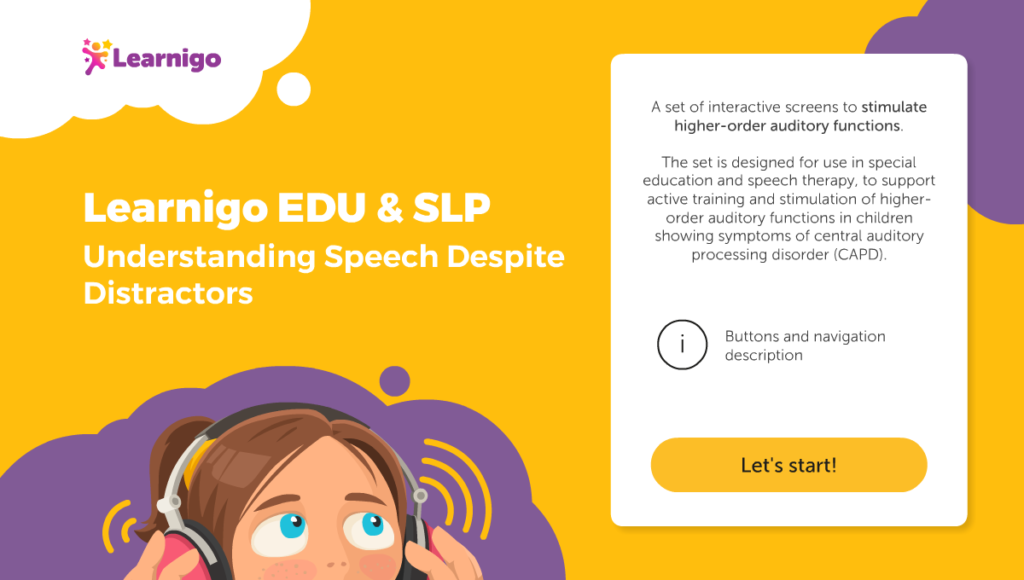
Understanding Speech Despite Distractors (EDU & SLP)
A rich set of interactive exercises to support the development and improvement of higher auditory functions in addition to the development of attention and memory based on an auditory input.
This DEMO represents less than 5% of the entire Understanding Speech Despite Distractors product.
Try the entire program for FREE with our trial!
The program is designed for use in special education settings as well as speech therapy. The programs aims to support active training and stimulation of higher auditory functions in children showing symptoms of central auditory processing disorder (CAPD). It can be used for corrective
and compensatory work, but also for progress monitoring, as well as with other work intended to stimulate higher auditory functions in
children with difficulties in learning, writing, and reading, and in children
with co-existing emotional disorders that may be due to impaired sound analysis at a central level. This program is intended for therapists, including speech therapists and teachers working with pre-school and elementary
school children, aged 5+ (within typical developmental norms) or regardless of age in the case of children with intellectual disabilities.
The exercise sets in the program are designed to reflect the criteria contained in the definition of central auditory processing disorder (CAPD) formulated by the American Speech-Language-Hearing Association
(ASHA, 1996*).
* According to the recommendations of the American Speech-
Language-Hearing Association (ASHA), auditory processing disorders are diagnosed in cases where at least one of the essential higher auditory
functions is impaired. The symptoms of auditory processing disorders
include:
- Difficulties with understanding longer statements;
- Difficulties with understanding speech in noise;
- Difficulties with locating the source of sound;
- Problems with concentration;
- Difficulties with learning to read;
- Auditory hypersensitivity.
The program includes the following dedicated exercise sections:
- Sound source location and lateralization
- Sound identification and discrimination
- Recognizing sound features
- Temporal aspects of hearing
- Understanding speech despite distractors
- Understanding distorted speech
- Variety fair
- Hearing tasks
Previous
Next